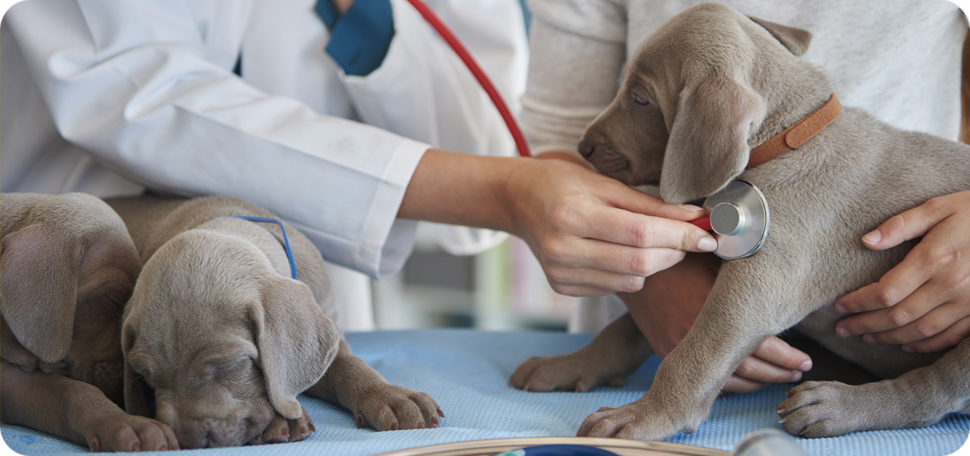


The last thing any new puppy owner or dog breeder wants to hear is a diagnosis of parvo. Parvo in puppies is unfortunately a common disease with deadly consequences, which is why it is important for anyone dealing with puppies on a regular basis to be aware of the symptoms of parvo and what to do about it.
What Is Parvo?
Parvo in puppies is caused by the canine parvovirus. This virus is highly contagious and spreads through direct contact with an infected dog or by indirect contact with a contaminated object. Your puppy is exposed to the parvovirus every time he sniffs, licks, or consumes infected feces. Indirect transmission occurs when a person who has recently been exposed to an infected dog touches your puppy, or when a puppy encounters a contaminated object, like a food or water bowl, collars and leashes, and the hands and clothing of people who handle infected dogs. That’s why it’s so important to use a parvo disinfectant.
Why Do Puppies Get Parvo?
Puppies ages six weeks to six months are the most susceptible to parvo. Puppies younger than six weeks old still retain some of their mother’s antibodies, assuming that the dam received her full series of parvo vaccinations. Puppies are vaccinated against parvo at approximately 6, 8, and 12 weeks of age. They are vulnerable to the disease until they have received all three shots in their vaccination series, which means owners need to take extra precautions during this time to prevent their puppies from contracting the virus. Puppies should receive a dose of canine parvovirus vaccine between 14 and 16 weeks of age, regardless of how many doses they received earlier, to develop adequate protection.
The severity of parvo cases varies. The stress of weaning can lead to a more severe case of parvo in puppies, as stress weakens the immune system. A combination of parvo and a secondary infection or a parasite can also lead to a more severe case of parvo in puppies.
What are the clinical signs of parvo?
The clinical signs and symptoms of Canine Parvo Virus (CPV) disease can vary, but generally, they include severe vomiting and diarrhea. Diarrhoea often has a very strong smell, may contain lots of mucus, and may or may not contain blood. Additionally, affected dogs often exhibit a lack of appetite, marked listlessness and depression, and fever. It is important to note that many dogs may not show every clinical sign, but vomiting and diarrhea are the most common and consistent signs; vomiting usually begins first. Parvo may affect dogs of all ages, but is most common in unvaccinated dogs less than one year of age. Young puppies less than five months of age are usually the most severely affected, and the most difficult to treat. Any unvaccinated puppy that shows symptoms of vomiting or diarrhea should be tested for CPV.
Can parvo be prevented?
The best method of protecting your dog against CPV infection is proper vaccination. Puppies receive a parvovirus vaccination as part of their multiple-agent vaccine series. It is recommended to be given at 8, 12, and 16 weeks of age. In some high-risk situations, veterinarians will give the vaccine at two-week intervals, with an additional booster administered at 18 to 22 weeks of age. After the initial series of vaccinations, boosters will be required on a regular basis. If an approved three-year parvovirus vaccine was used, the next booster vaccine will be routinely administered in three years.
Medications and Supplements Bakson Veterinary’s Parvo Aid Drops are a combination Mercurius solubilis, Arsenicum album, Acidum hydrofluoricum, Baptisia tinctoria, Carbo vegetabilis, Gelsemium sempervirens. It prevents and treats Canine parvovirus with associated symptoms of pyrexia, lethargy, vomiting, diarrhoea, dehydration, and loss of appetite.
Corporate Office : 5th Floor, 529-532, Capital City, Sector – 94 Noida, Gautam Buddha Nagar, Uttar Pradesh – 201301
COPYRIGHT © BAKSON GROUP 2023. ALL RIGHTS RESERVED.